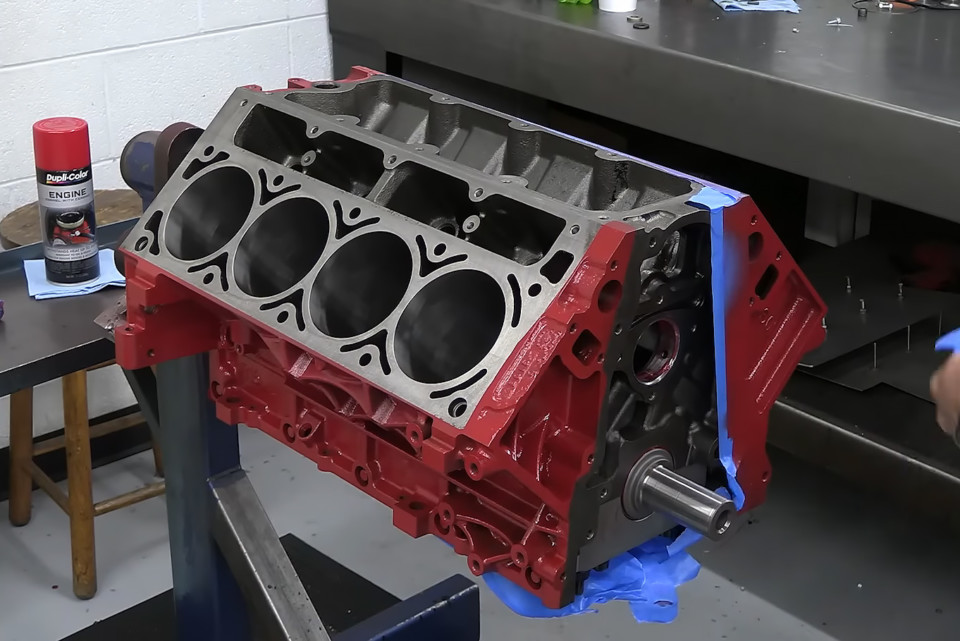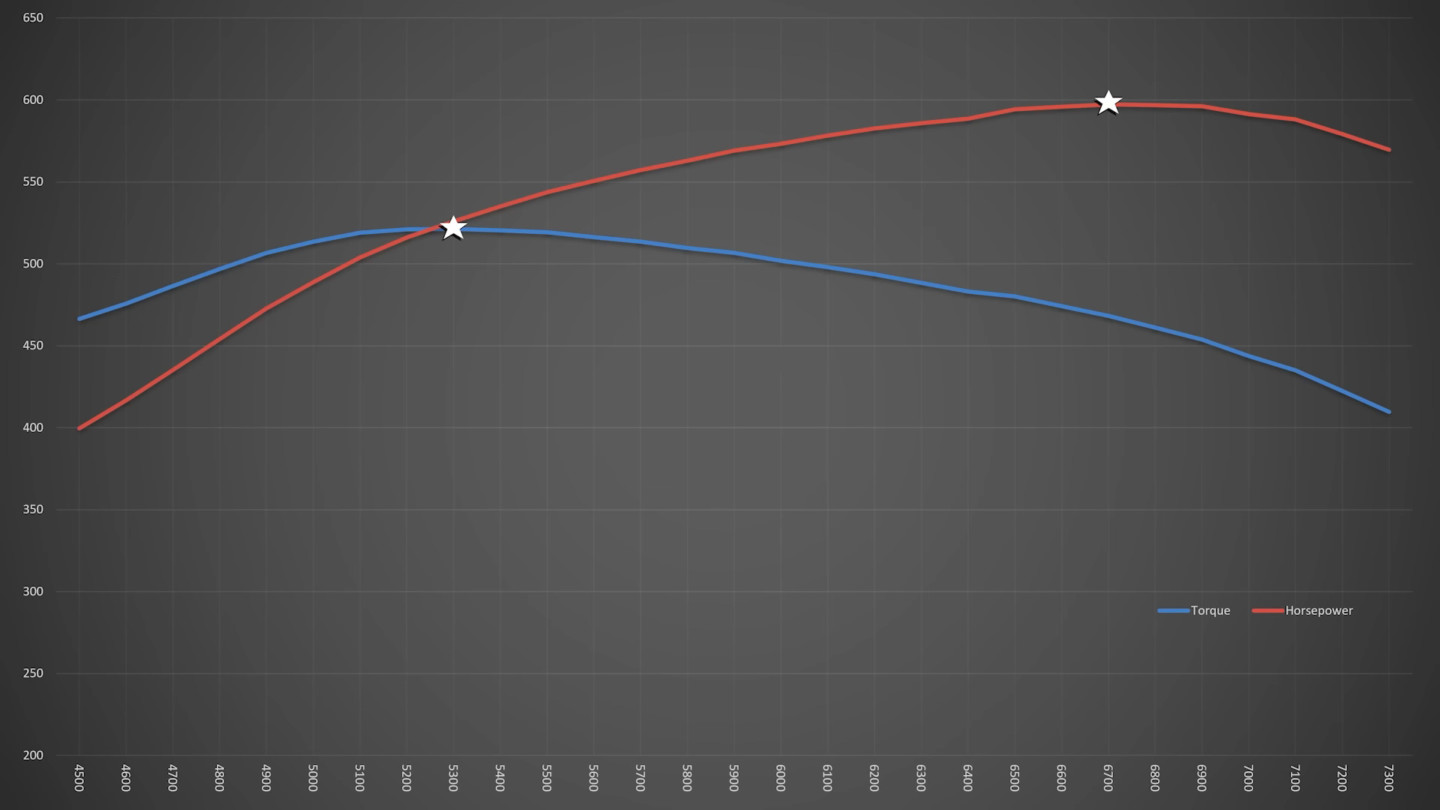Oftentimes, when we showcase one of Jeff Huneycutt’s Horsepower Monster videos, it’s an awesome build using some of the best aftermarket parts the market has to offer, in the quest for a unique engine – be it design or application. However, this one is a little different. This one is Huneycutt’s personal project engine. Oh, and it’s been on fire.
We can empathize with Huneycutt here because our own LS5.0 project was on fire (or underwater, or both; we were never able to figure it out for sure) in its life as an OEM powerplant. So, to see him undertake the project and not only bring it to life, but give it a chance at an even better life than it ever led in an Escalade, is something that resonates with us at our core.
“There was corrosion everywhere,” Huneycutt says of the rescued powerplant. “I had to give up on the idea of a civilized disassembly and beat the pistons out of the bore with a hammer. There was so much damage to the rest of the components there was no hope of refurbishing any of it.” Because of that, the only thing from that original engine Huneycutt kept was the block and front and rear covers.
Making A Silk Purse Out Of A Sow’s Ear
In order to transform the burnt-up, corroded hulk of iron that was the 6.0-liter LS block, Huneycutt went to a shop familiar to Horsepower Monster viewers, Automotive Specialists, to see if Keith and Jeff Dorton could save it. A massive overbore was required, going from the stock 4.00-inch bore all the way to 4.070 inches — that’s a .070-inch overbore. Since the bores were huge, that set the tone for everything else in the project.

It took more than a coat of paint to bring this 6.0-liter block back to life. A significant amount of machining, including a massive .070-inch overbore, made it as good as new.
Using a forged K1 Technologies 4.00-inch crankshaft, the engine’s displacement comes out to a cool 416 cubes — an additional 52 over stock. The crank has a 24x reluctor pressed on and is held in place with an ARP main stud kit. Hanging off the crank’s journals are a set of K1 6.125-inch forged 4340 steel H-beam connecting rods. Wiseco supplied the forged pistons with their skirt coating, in a short 1.110-inch compression height to accommodate the 4.0-inch stroke and 6.125-inch connecting rods.
The pistons came with Wiseco’s GFX ring package. That’s a .043-inch gas-nitrided steel top ring, a .043-inch phosphate cast-iron second ring, and a 3mm stainless-steel oil ring with support rails, since the short compression height causes the wrist pin to intersect the oil ring groove. A Melling oil pump provides the lubrication, and Huneycutt swapped the pressure relief spring for Melling’s “COPO” spring.

K1 Technologies’ 4.00-inch stroke forged crank and 6.125-inch H-beam rods mean that the Wiseco piston’s compression height has to be short and the wrist pin intersects the oil ring.
Top End Components
For cylinder heads, Huneycutt could have salvaged the stock castings, but decided to scrap them in favor of some serious iron… err… aluminum. With the theme of overkill on this Horsepower Monster project, he opted for a set of Brodix’s new 13.5-degree series of fully ported cylinder heads. They feature a 245cc cathedral intake port and a 70cc combustion chamber for a 9.99:1 compression ratio. A 2.100-inch intake valve and 1.600-inch exhaust valve, which flow over 370cfm on the intake side and 235cfm on the exhaust. A set of Fel-Pro MLS gaskets and an ARP stud kit seal the heads to the block.

The Brodix cathedral port heads are completely CNC’d and have a massive 245cc intake port, big 2.100-inch intake, and 1.600-inch exhaust valves.
Controlling those valves is a COMP Cams hydraulic roller camshaft. Huneycutt wanted something that wasn’t a peak-power dyno queen, but able to make power across the RPM range, and be equally usable on the street and the track. The cam specs out at .637 inch of lift on both the intake and exhaust, with a split duration of 247 degrees at .050 on the intake and 255 degrees at .050 on the exhaust, with a 113-degree lobe-separation angle.

The COMP Cams hydraulic roller camshaft features a good amount of lift, along with a split duration to offer a nice, wide powerband along with street manners.
A COMP Hi-Tech roller timing set keeps the cam in time with the crankshaft, and a set of COMP’s new Evolution cartridge hydraulic roller lifters translate the cam lobes’ rotation into vertical motion A set of COMP pushrods connects the lifters to a set of COMP’s Max-Lift BSR shaft rocker arms. Keeping the assembly under control are the standard dual valvesprings that came with the Brodix heads, which measure in at 167 pounds of seat pressure and 390 pounds fully open.

The BSR shaft rocker system uses standard-style LS rocker arms, but in a much more stable shaft-and-bushing arrangement.
Topping off the combination is FiTech’s Ultimate LS Top End kit, which includes a sheetmetal intake manifold, 55 lb/hr fuel injectors, fuel system, 102mm throttle body, coil packs, wiring harness, and ECU and touchscreen controller. Sealing up the top of the heads are a pair of Holley’s cast LS valve covers. For the accessory drive, a Holley mid-mount accessory mount kit was the ticket to fit the chassis. Thanks to Holley’s unique water pump casting with all the accessory mounts cast right into it, there was no need for a ton of mounting hardware or bracketry.
Nothing To It But To Do It
With the engine complete, it was time to break it in on the dyno, and then make some power pulls. Huneycutt is quick to point out for the sake of transparency, that they did have to run an electric water pump due to the dyno’s water system, but figures any horsepower gained there would be offset by running a bare throttle body. After letting the FiTech self-tune and making a few adjustments, Huneycutt was rewarded with 597.3 horsepower at 6,700 rpm and 521.2 lb-ft of torque at 5,300 rpm. Just shy of the 600 horsepower mark, Huneycutt says, that it’s not worth the integrity of the Horsepower Monster name to fiddle with things to get that extra 2.7 horsepower. Even at only 597 horsepower, for a naturally aspirated, pump-gas engine, with an ultimately streetable cam and a powerband that provides stout average numbers, there’s nothing to complain about.

Just under 600 horsepower and 521 lb-ft of torque isn’t bad at all for a 10:1 street engine on 93-octane pump gas. That this is going to scoot no matter where you hit the gas.




